Opinion
Muslims’ contribution to Sri Lanka and the world: Some little known facts
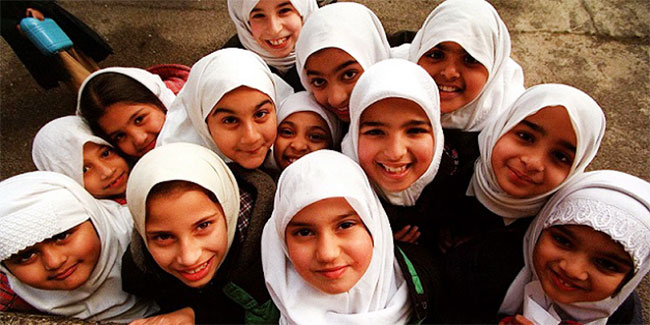
by Ifham Nizam
The Island spoke to Asiff Hussein, Vice-President, Outreach of the Centre for Islamic Studies (CIS) about cultural contribution of Muslims and misconceptions about the Islamic faith.
Q:
You have lectured extensively on Muslim Cultural Contribution. So, how would you describe such contribution both locally and internationally?
A:
Islam has throughout history been a very dynamic force, extensively borrowing from cultures and contributing to them. In the early years of Islam, the influence of the Byzantine Empire, also known as the Rome of the East was considerable. Thence came the domes of our mosques and the crescent symbol which was originally the symbol of Constantinople, the capital of Byzantium. When the Ottoman Turks took it in 1453, it became the symbol of Islam. The Muslims in turn improved on the architecture and so we have the onion domes of the Kremlin and the pointed towers of Castle Neuschwanstein in Bavaria resembling Islamic minarets as you see in the great mosque in Medina and the Blue Mosque in Istanbul.
In medicine, the early Muslims borrowed from Greece and the medical tradition known as Unani (literally Greek) was born. The Muslims in turn improved on it and passed it on to Europe, so much so that Ibn Sina’s (Avicenna’s) Qanoon Fit Tibb or Canon of Medicine was a standard textbook in European universities until as recently as the eighteenth century.
Even in Sri Lanka, we find Muslims have made a very meaningful contribution in terms of food, dress and pastimes. Sinhala sweetmeats such as aluva, dodol and bibikkan, accharu pickles, savoury sambols, articles of dress like sarong and karabu and pastimes such as the rabana and kite flying all owe their origins to the country’s Moor and Malay communities. Nose ornaments widely worn by Tamil women were also introduced by the Muslims. Arab and Muslim women widely wore such ornaments in the good old days.
Q:
Has Islamic fundamentalism taken hold of the local Muslim community and if so what can be done about it?
A:
Fundamentalism might be the wrong word to use in this context since a Fundamentalist is literally one who sticks to the fundamentals of the faith. The proper word to use might be extremist rather than fundamentalist. There have been some extremist interpretations of Islam by Saudi-inspired Salafi scholars locally, especially where matters such as niqab (face covering) are concerned. However even in Saudi Arabia, these extremist attitudes are no longer being tolerated and that’s a good thing. In Islam what is required is to dress modestly and cover all except the face and hands. To say that the faith requires covering more than that is going beyond Islamic teachings and no doubt an expression of extremism. Nevertheless I still believe it should be a choice for the woman herself if she opts for niqab. Individual freedoms are also important, so long as it is not forced or coerced using religion among other things.
However, this extremist thinking has not made much headway in Sri Lankan society and is rejected by the vast majority of Muslims. In fact, the Easter Sunday bombings of churches and hotels shook and shocked the community as we never imagined even in our worst nightmares that such a thing could ever happen. As things are turning out now, there were other sinister interests behind these terrorist attacks. What these terrorists did went against every teaching of Islam including striking religious places of worship and killing innocents among other things.
Q:
You focus a lot on the Past as an Inspiration for Co-existence between Muslims and people of other faiths. Why do you do that?
A:
Muslims have co-existed with the other communities of this island for well over a thousand years. They never arrived here as invaders but as peaceful merchants who made an immense contribution to our country by way of supplying essentials to isolated communities such as the Veddas and the landlocked Kandyan kingdom for centuries at a time when it was surrounded and at times blockaded by the colonial powers. They also intermarried with both Sinhalese and to a lesser extent Tamils. This is probably why you find Kandyan Muslims still bearing Sinhala ge-names. It has also been established by genetic studies that Sri Lankan Muslims are the least exclusive of all of the island’s races.
This means they have been the most inclusive and have DNA that closely resembles the Sinhalese. This is mostly true of maternal lineages which proves that the early Moors settled here intermarried with local women. However there are Sinhalese paternal linages of Moors as well which shows how close these two communities were in the past. So how do we create awareness of this fact? Simple, by publicizing it in every possible way, that we are one with the rest of the communities that have made this beautiful island our home.
Q.
There is a misconception that in Islam women are not treated as equals. How far is this true?
A:
This is a common misconception, mainly because of the way Islam is interpreted in certain countries like Saudi Arabia. In Islam, women are free to own and manage property and transact business in their own right; they are free to marry partners whom they choose and may do so even sans the consent of male guardians such as father or brother. Unfortunately many of these rights given in both the Qur’an and in the ahadith or traditions of our Prophet (Peace Be Upon Him) are trampled in countries like Saudi Arabia which are more concerned about maintaining their tribal traditions than the true laws of Islam.
In some cases, the West deliberately complicates the picture, especially when it comes to matters like Female Genital Mutilation. True, Islam has nothing to do with FGM, but we do have something called female circumcision, which like male circumcision involves the removal of a little bit of skin, the prepuce covering the clitoris and ensures a lifetime of genital hygiene and enhanced sexual pleasure. But the West perpetuates this myth equating it to FGM as happens in certain African countries. Fortunately Islamic organisations and publications have now begun addressing these topics. A case in point is the leading international Islamic magazine Al Jumuah carrying its cover story on Islamic Female Circumcision, making a very good case why it ought to be obligatory and outlining its many health and sexual benefits. Thus, it is not only the manner in which Islam is interpreted in certain societies that is the problem, but also how the West portrays it to be.
Q:
Sharia Law is commonly thought to be a very harsh set of laws and unsuited for the modern world. What is your take on this?
A:
Shariah Law is not at all what it is commonly understood to be. You wouldn’t believe me if I were to tell you that it was until recently, one of the most, perhaps the most lenient of legal systems the world had known. But that’s the fact. Take amputation of the hand for theft. Do you know that to cut off a thief’s hand that at least thirteen conditions should be met and that if any one of these conditions are not met, the penalty cannot be applied. In fact, in Ottoman Turkey where the Shariah was applied for well over three centuries, there were only a handful of cases where thieves had their hands cut off.
Why, because the legal conditions that required the penalty to be carried out were so difficult to establish. The stolen item should have had a certain value, something like forty dollars or more in the present context, it should have been kept in a place of safekeeping like a safe, it should have not been in a public place or in the sight of the public, etc., and when all these conditions have expired, it is still possible to save the thief from the penalty if the victim comes forward to gift it to him or her. In contrast until as recently as the early 1800s thieves in Britain could be sent to the gallows without any of the attenuating conditions that Islamdom imposed.
Then take adultery. True, stoning to death may well be the punishment, but the fact remains that to prove adultery as many as four witnesses are necessary, and these four should have seen penetration taking place by the offending couple. The purpose of Shariah is not to humiliate or mutilate, but to impress on potential offenders the seriousness of their offence and to prevent the evil from being broadcast in public so that it becomes the order of the day.
Opinion
Learning from global models to address flooding and water shortage in Sri Lanka

by Sudharman Siripala
Sri Lanka is grappling with the increasing threat of climate change, which has led to unpredictable weather patterns. The country faces a dangerous combination of flooding in some regions and water shortages in others, a situation exacerbated by shifting rainfall patterns. Rivers originating in the Central Hills, such as the Mahaweli, Kalu, and Kelani, flow through much of the country, but these water sources are not being distributed evenly. Districts like Monaragala and Hambantota, located in the dry zone, are experiencing severe water shortages. To address this challenge, experts suggest the development of an interconnected river system to harness excess water during floods and redirect it to drier areas, ensuring a year-round water supply for agriculture and daily use.
Global Case Studies in River Management
Several countries facing similar water-related challenges have implemented successful water management systems that Sri Lanka could adapt to its unique circumstances:
The Netherlands – Room for the River Programme
The Netherlands, a country prone to flooding, widened its rivers and relocated dikes to create floodplains. This approach allows rivers to overflow without damaging urban areas, while preserving water flow and natural habitats. Sri Lanka could apply this concept by designating specific riverbank areas for temporary flood storage.
China – South-North Water Transfer Project
China’s massive project channels excess water from the flood-prone Yangtze River to drier northern regions. This system of canals and reservoirs could inspire Sri Lanka to divert water from rivers in the Central Hills to drier areas in the south and east.
Bangladesh – River Interlinking Projects
Bangladesh has implemented river interlinking projects to redistribute water from flood-prone rivers, such as the Brahmaputra, to drier regions. Sri Lanka could link its major rivers like the Mahaweli and Kelani to smaller rivers in water-scarce districts to balance water distribution.
India – National River Linking Project
India’s National River Linking Project connects major rivers to manage both floods and droughts. Sri Lanka could use similar strategies, connecting rivers around the 500-foot contour line in the Central Hills to help distribute water more effectively.
United States – Mississippi River and Tributaries Project
The Mississippi River system combines levees, floodways, and diversion channels to manage flooding. Sri Lanka could adopt similar flood-control measures in vulnerable river basins such as the Kelani and Kalu.
Japan – Underground Reservoirs and Flood Channels
Japan’s G-Cans Project in Tokyo channels excess water into underground reservoirs to prevent urban flooding. A similar underground system could be implemented in Colombo and other flood-prone cities in Sri Lanka.
Singapore – Marina Barrage
Singapore’s Marina Barrage serves as both a flood control measure and a water supply resource. Sri Lanka could develop similar systems to control flooding in urban areas and ensure water availability during dry spells.
Thailand – Chao Phraya River Basin Management
Thailand uses diversion channels in the Chao Phraya River Basin to prevent flooding in Bangkok and direct water to agricultural areas. Sri Lanka could replicate this by creating diversion channels to supply water to its agricultural zones.
Actionable Solutions for Sri Lanka
Develop an Interconnected River System
Establish water diversion channels along the 300-500 meter contour lines of the Central Hills to capture excess rainfall during floods and redirect it to drier areas.
Build Reservoirs and Storage Tanks
Construct reservoirs to store diverted water, ensuring a steady supply for agriculture and domestic use. Sri Lanka has around 14,000 ancient tanks out of 30,000 that could be revitalized for this purpose.
Improve Urban Flood Defenses
Drawing inspiration from Japan and Singapore, build underground reservoirs and flood channels in cities like Colombo to mitigate urban flooding.
Strengthen Watershed Management
Restore natural floodplains and create wetlands to absorb excess rainwater, as seen in the Netherlands, helping to reduce flood risks.
Encourage Public-Private Partnerships
Foster collaboration between the public and private sectors to fund large-scale water management infrastructure, leveraging models from China and the United States.
Leverage Technology
Utilise modern forecasting and real-time water management systems, similar to those in Bangladesh and Thailand, to monitor water levels and manage river flows dynamically.
International Collaboration
Form partnerships with countries that have successfully implemented flood control and water management systems to share expertise and technology.
Sri Lanka’s dual challenges of flooding and water scarcity, compounded by climate change, require immediate action. By developing an interconnected river system and learning from successful global water management models, Sri Lanka can mitigate the effects of floods while ensuring a sustainable water supply for agriculture and daily life. It is crucial for the country to act now, as these solutions have the potential to transform Sri Lanka’s water management system for the better.
Sudharman Siripala Managing Director of Geoinformatics Group and a Registered Licensed Surveyor, specializes in geo-spatial applications. He also serves as a freelance value chain consultant for Vivonta Green Tech Consultants (www.vivonta.lk)
Opinion
Doctor’s plight

Some people have found fault with a female doctor for not coming forward to identify her rapist and help make him pay for his crime.
Do they not realise the emotional toll of facing her rapist again?
There should be a way for survivors to testify directly to the judge without enduring such distressing encounters. Making a victim relive her trauma in this manner is akin to subjecting her to the ordeal all over again.
A Ratnayake
Opinion
Developing attitudes of schoolchildren for development
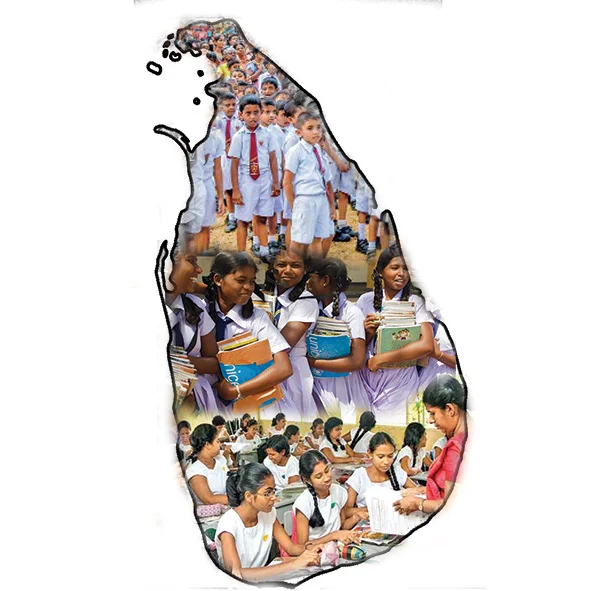
Sri Lanka was once at an economically comparable level with some of the world’s most developed countries in the 19th century. However, despite our country’s potential, we are still striving to fully develop. Many people often blame politicians, government officers, or various sectors for the situation. However, I believe the root cause of these issues lies not in any individual or group, but in the lack of good attitudes within our society.
We are investing significant resources into our education system, which is funded by the taxes of hard- working citizens. However, when we examine the outcomes, we realise that the academic achievements of our graduates alone are not enough. There are instances where professionals, despite having the necessary qualifications, fail to uphold ethical standards. In some cases, this even results in malpractice or harmful actions that damage our country’s reputation and progress. This highlights the gap between academic success and real-world responsibilities.
The education system, which is currently focused on competitive exams and rote learning, does not emphasise the development of attitudes and character in students. While our students are academically capable, many lack the qualities required to contribute positively to society. This lack of focus on social values, such as patriotism, selflessness and respect for elders, is holding us back from achieving the level of progress we deserve.
To address these concerns, I wrote to His Excellency, the President of Sri Lanka, on 24th September 2024, proposing education reforms that emphasise not only academic qualifications but also attitudes, ethics, and social responsibility. I suggested a holistic approach to university admissions and government recruitment, incorporating moral integrity, character, and extracurricular involvement, key traits for fostering well- rounded, responsible citizens. More importantly, I strongly recommended introducing a compulsory school subject, with both theory and practical components, focused on attitude development, which would be evaluated in university admissions. Encouraging extracurricular participation alongside academics will help shape ethical and socially responsible individuals.
I am pleased to inform you that the President, recognising the importance of these reforms, has directed the relevant ministries (by a letter dated 24th October 2024) to explore integrating these ideas into the education system. This marks a crucial step in transforming the values and attitudes of our youth for the nation’s benefit.
However, meaningful change requires collective effort. Parents, teachers, students, and citizens all play a role in shaping Sri Lanka’s future. Together, we must instill responsibility, ethics, and patriotism in the next generation. I invite you to share your thoughts and suggestions on further enhancing the values and attitudes of our youth. Your feedback will be invaluable in building a brighter future for Sri Lanka, one driven not just by knowledge, but by integrity and character.
Dr. Mahesh Premarathna
Research Fellow, National Institute of Fundamental Studies, Sri Lanka Email: mahesh.pr@nifs.ac.lk
-

 Business6 days ago
Business6 days agoCargoserv Shipping partners Prima Ceylon & onboards Nestlé Lanka for landmark rail logistics initiative
-
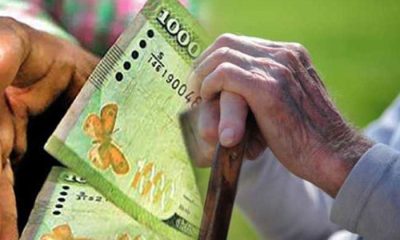
 News4 days ago
News4 days agoSeniors welcome three percent increase in deposit rates
-

 Features4 days ago
Features4 days agoThe US, Israel, Palestine, and Mahmoud Khalil
-
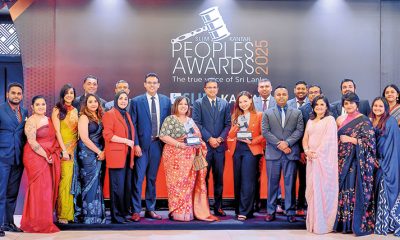
 Business6 days ago
Business6 days agoSri Lankans Vote Dialog as the Telecommunication Brand and Service Brand of the Year
-
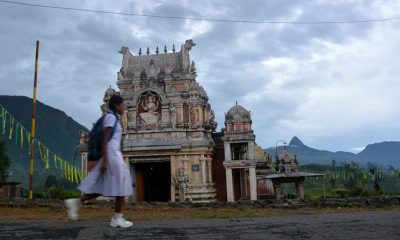
 News4 days ago
News4 days agoScholarships for children of estate workers now open
-
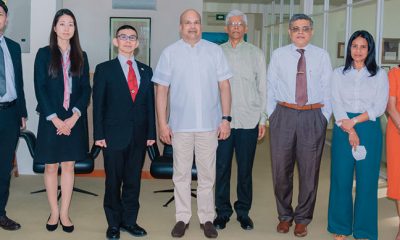
 News5 days ago
News5 days agoDefence Ministry of Japan Delegation visits Pathfinder Foundation
-

 Features6 days ago
Features6 days agoThe Vaping Veil: Unmasking the dangers of E-Cigarettes
-
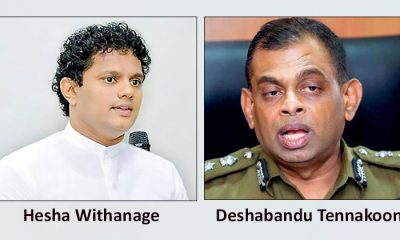
 News6 days ago
News6 days ago‘Deshabandu is on SLC payroll’; Hesha tables documents












